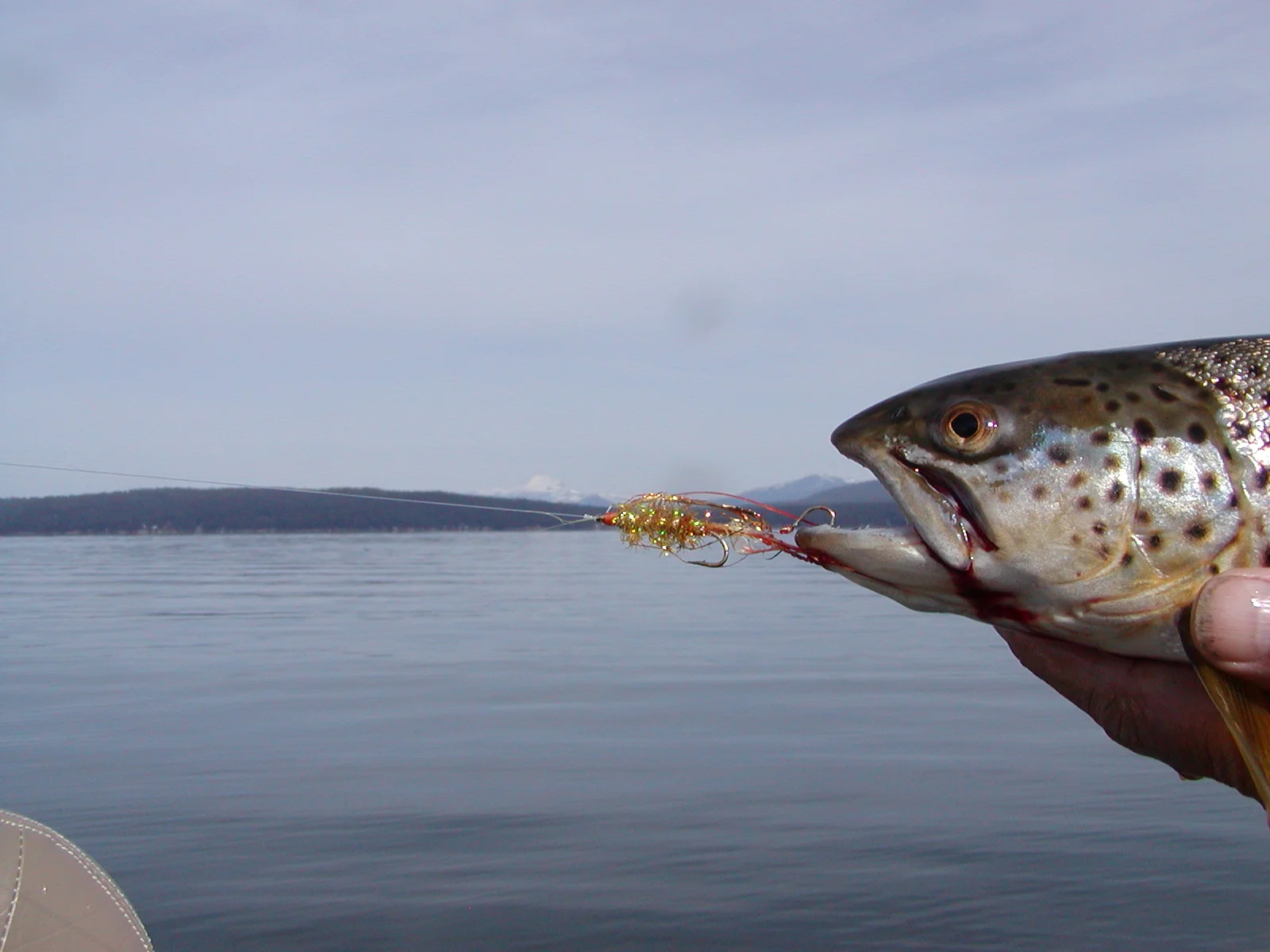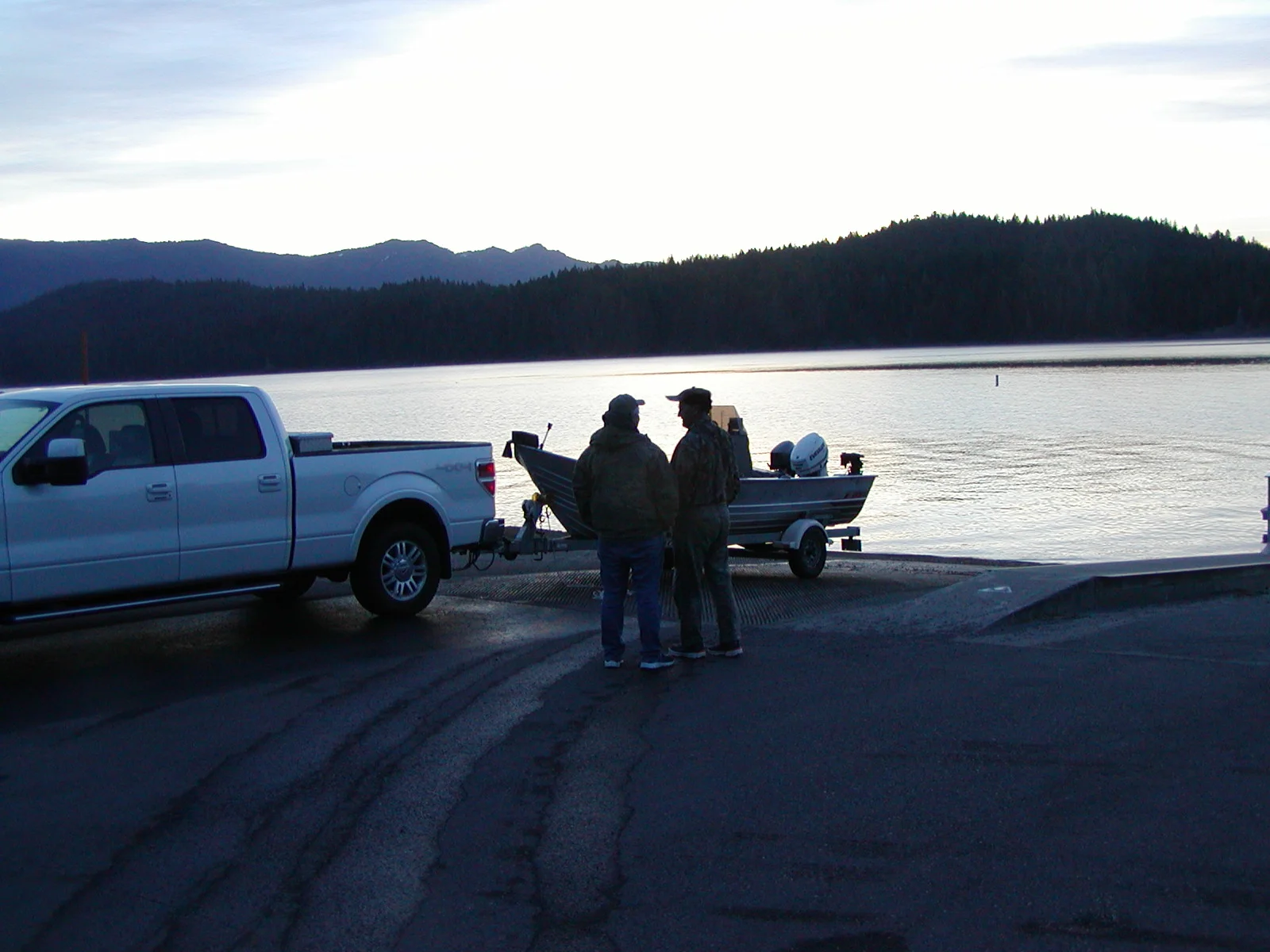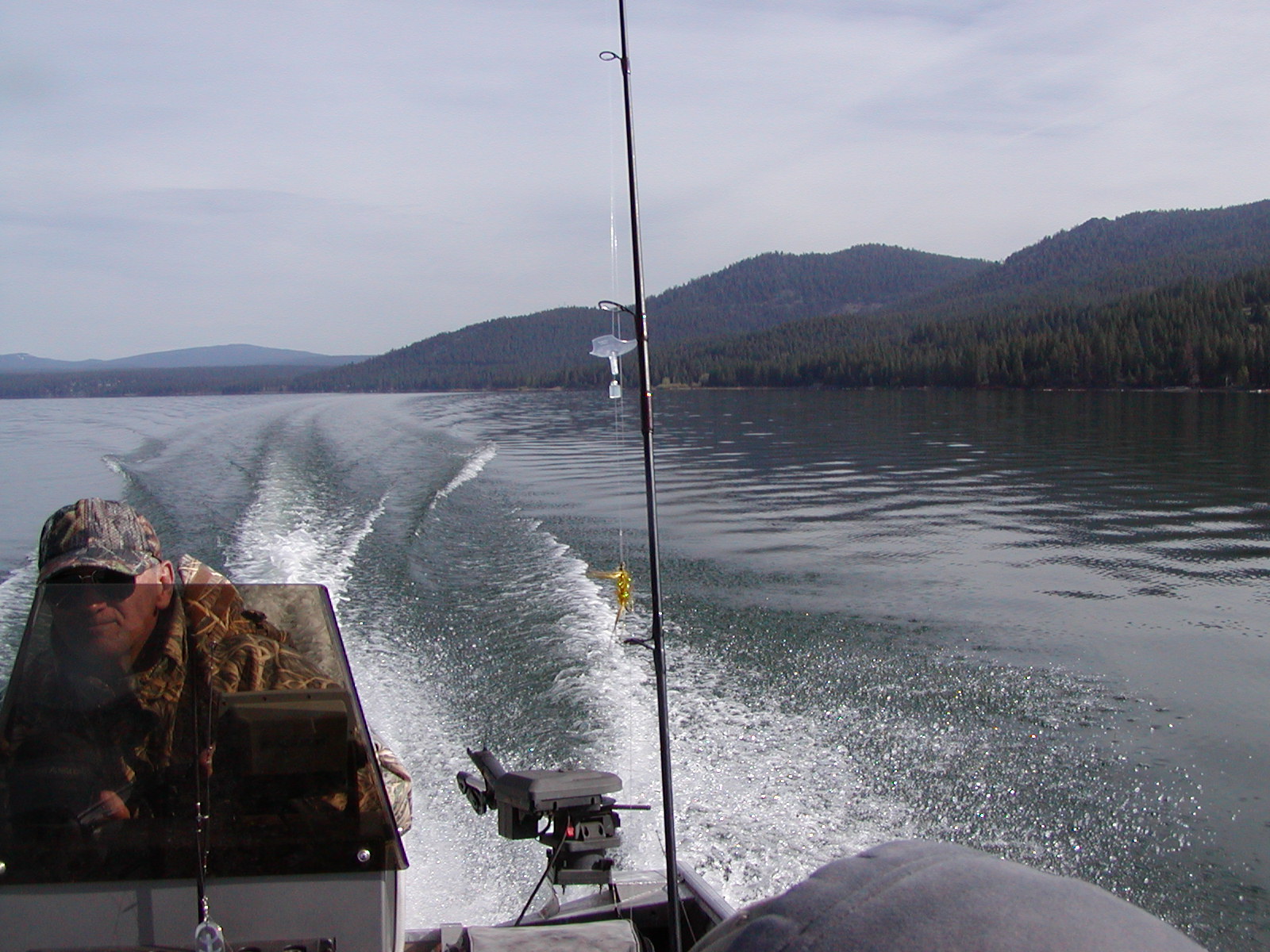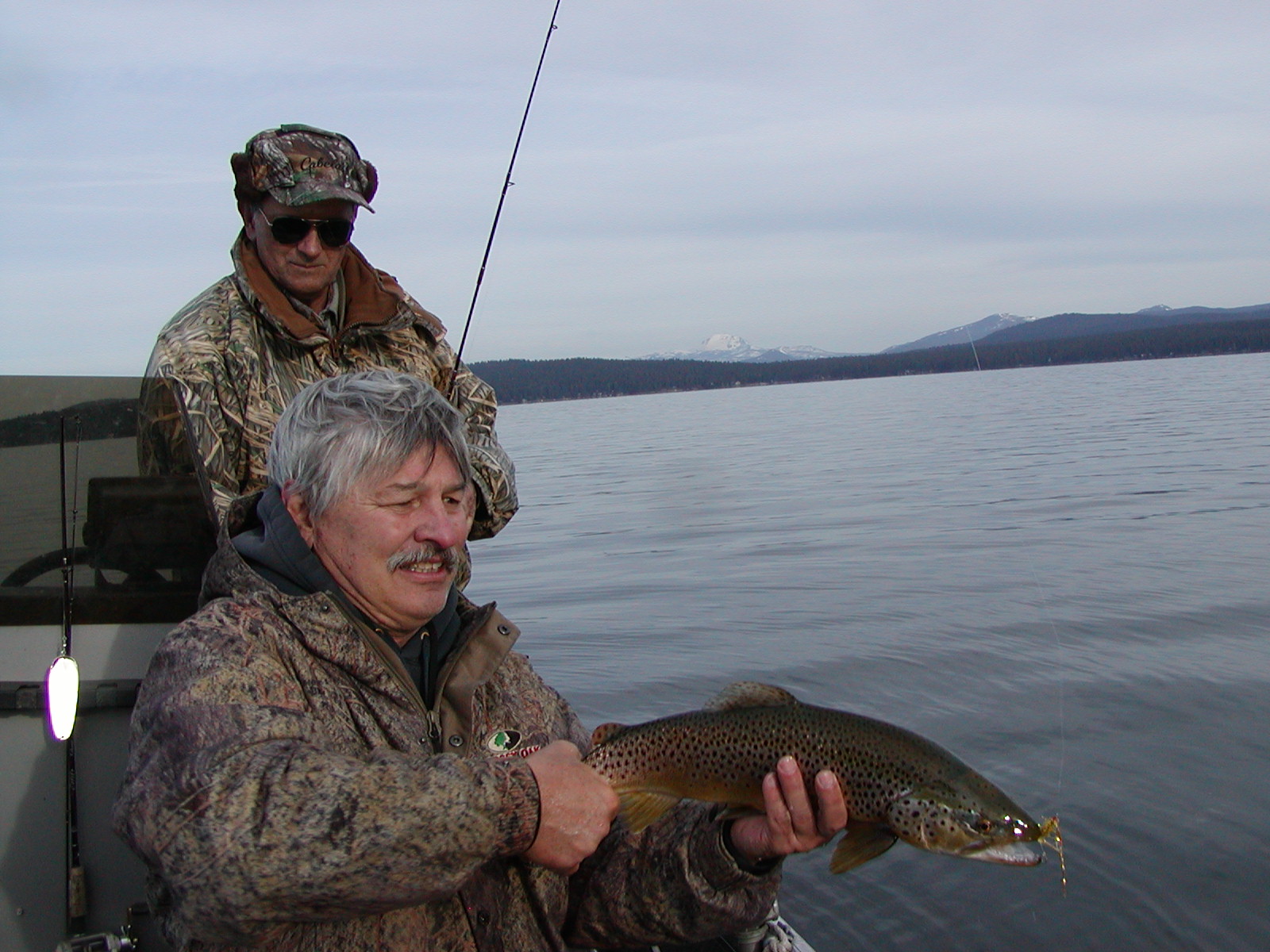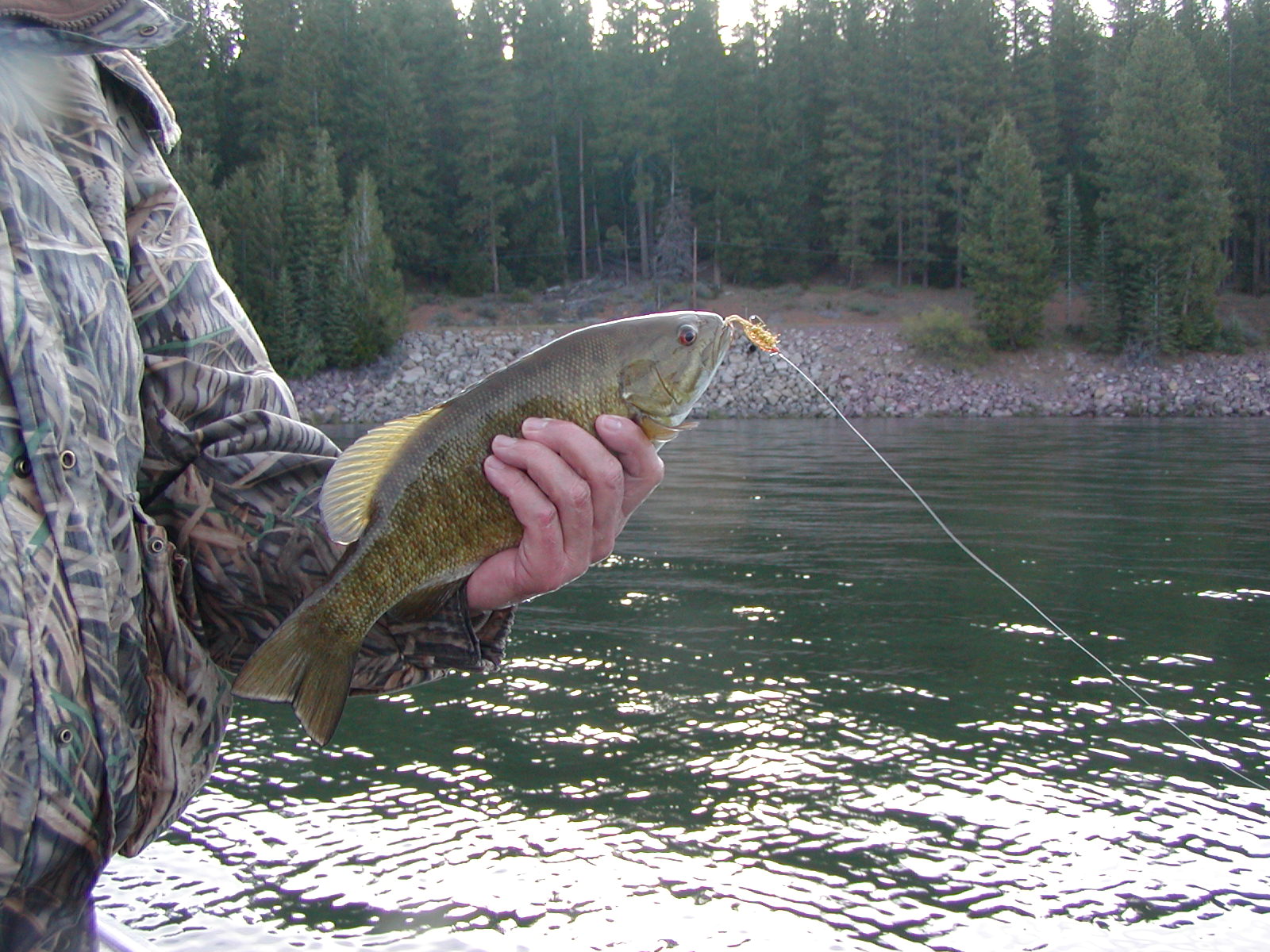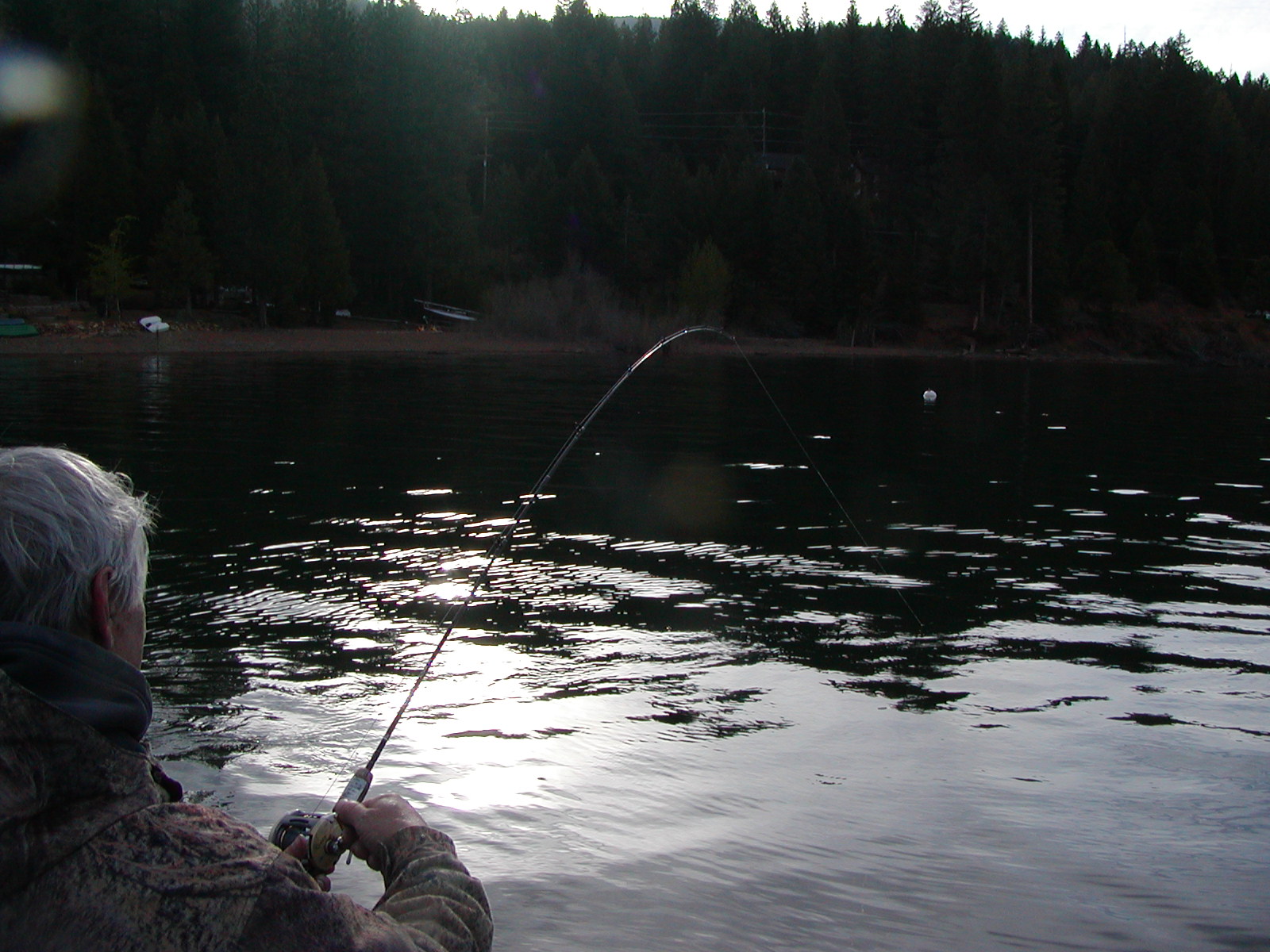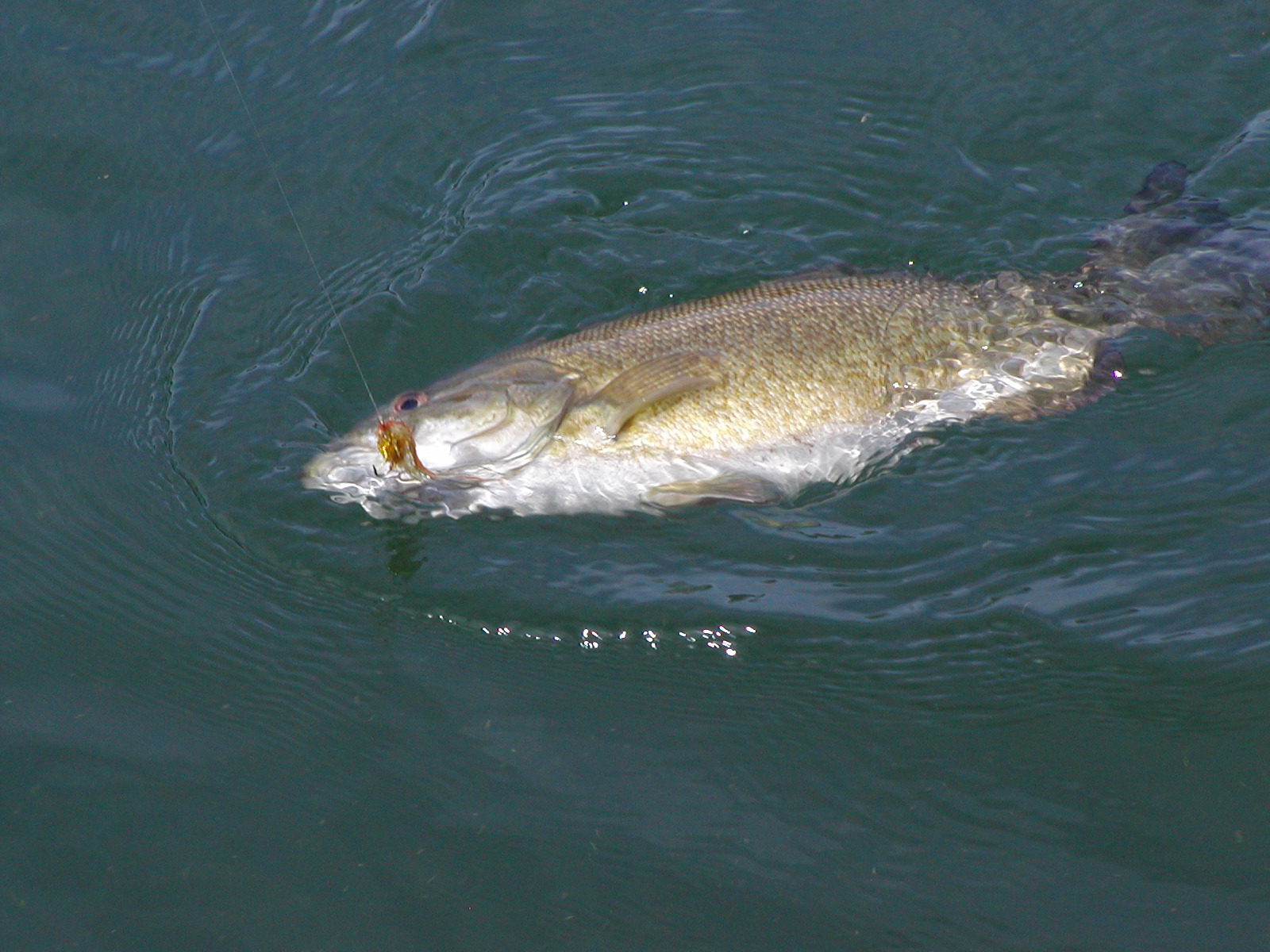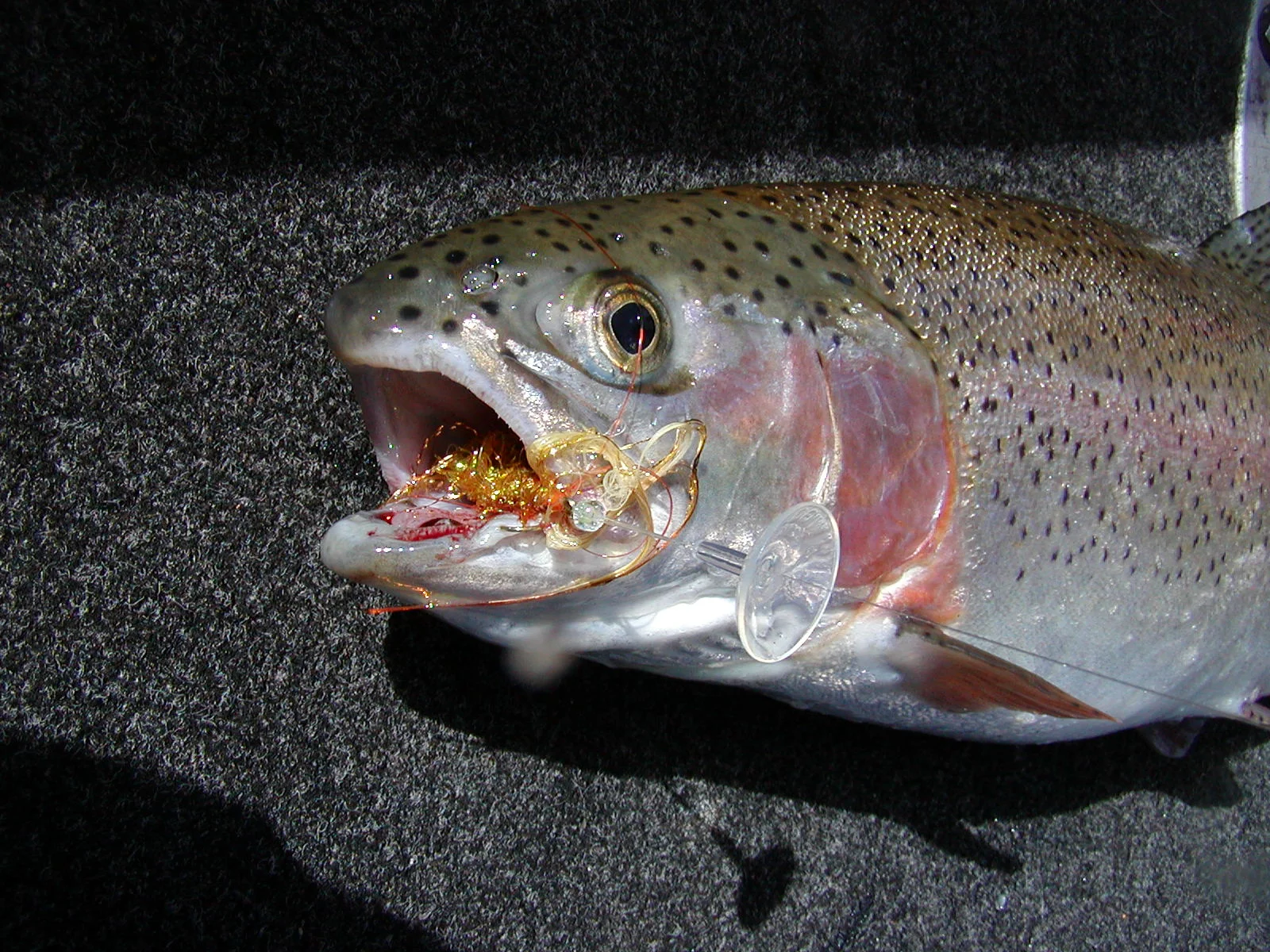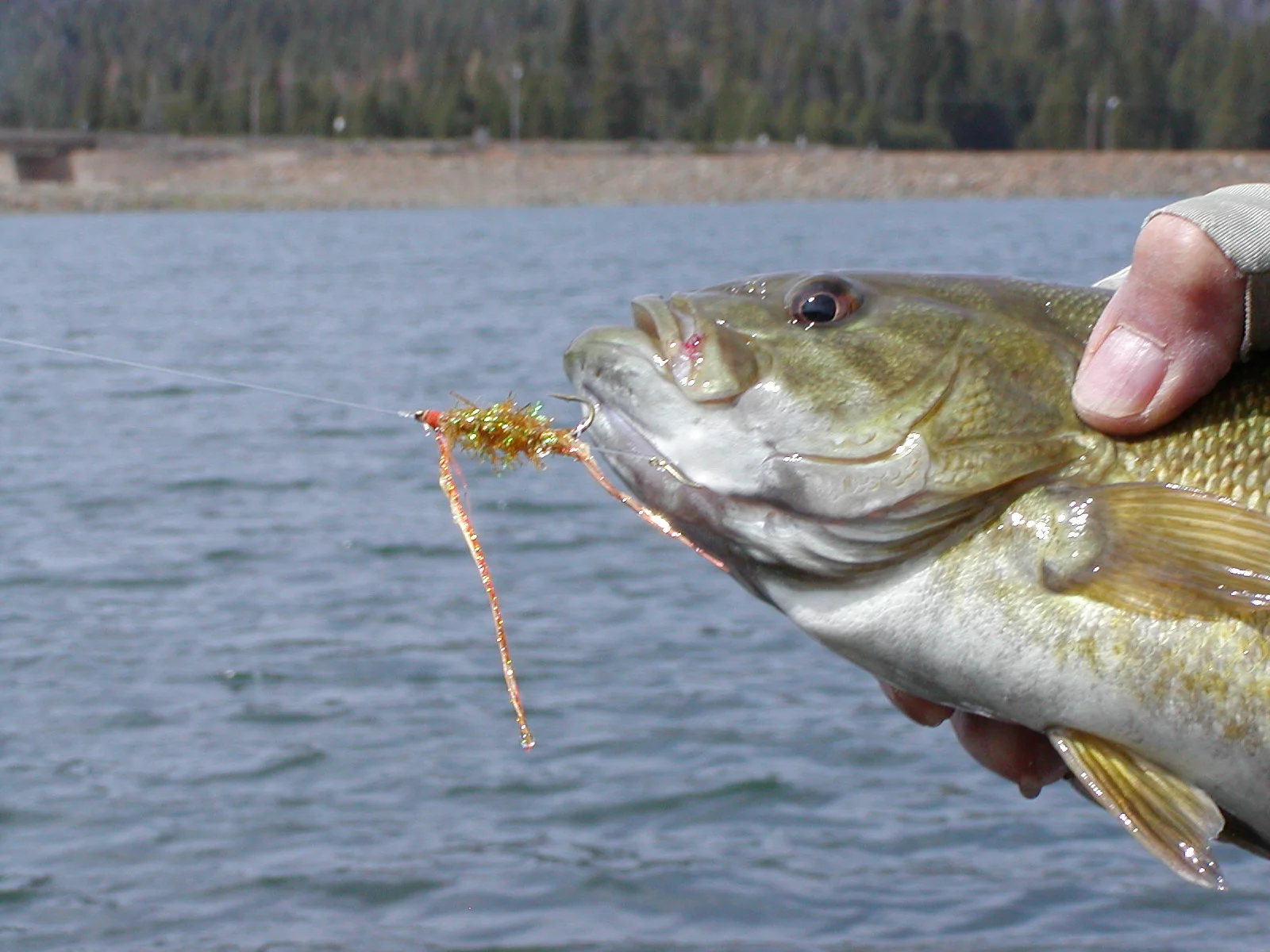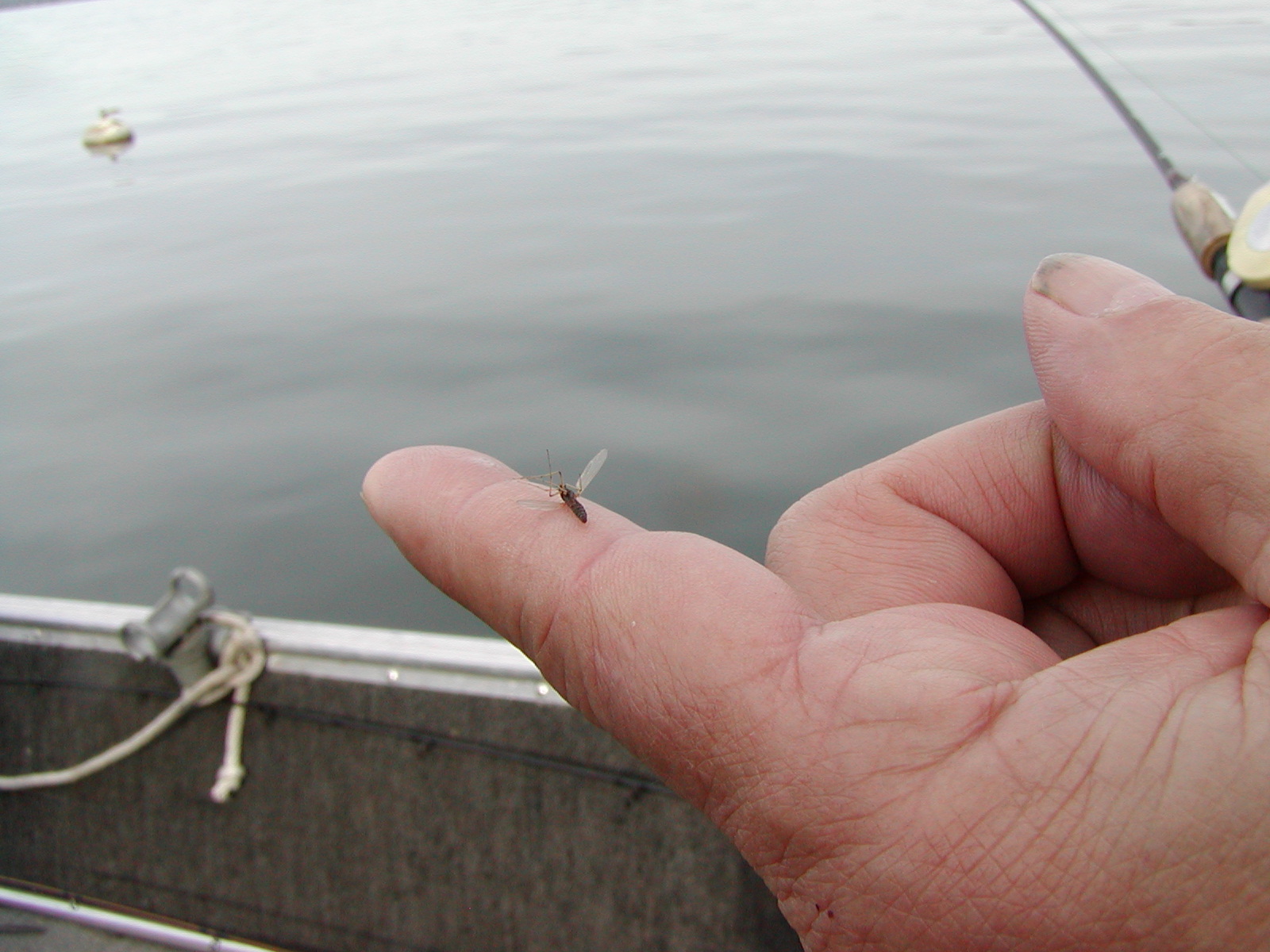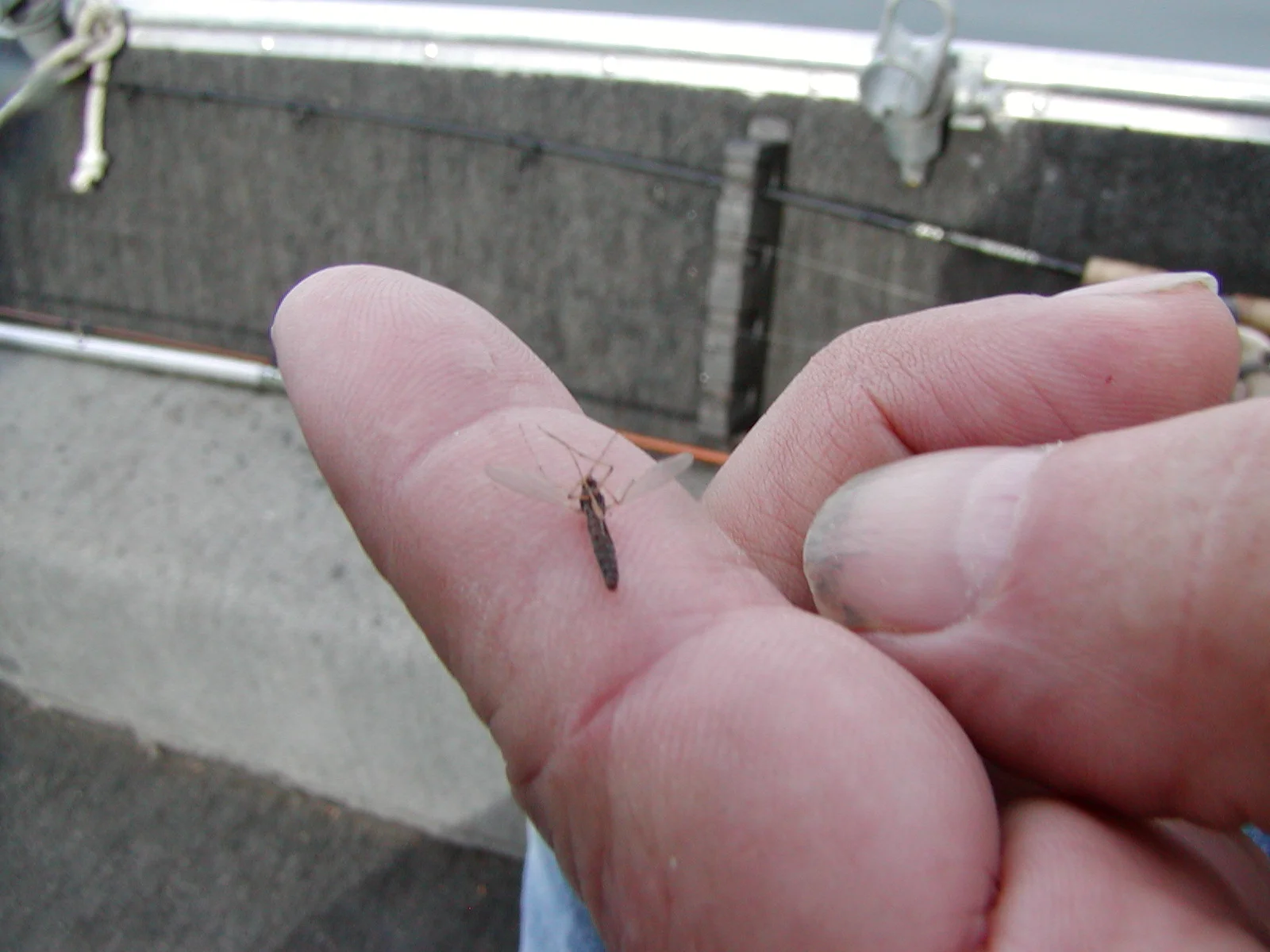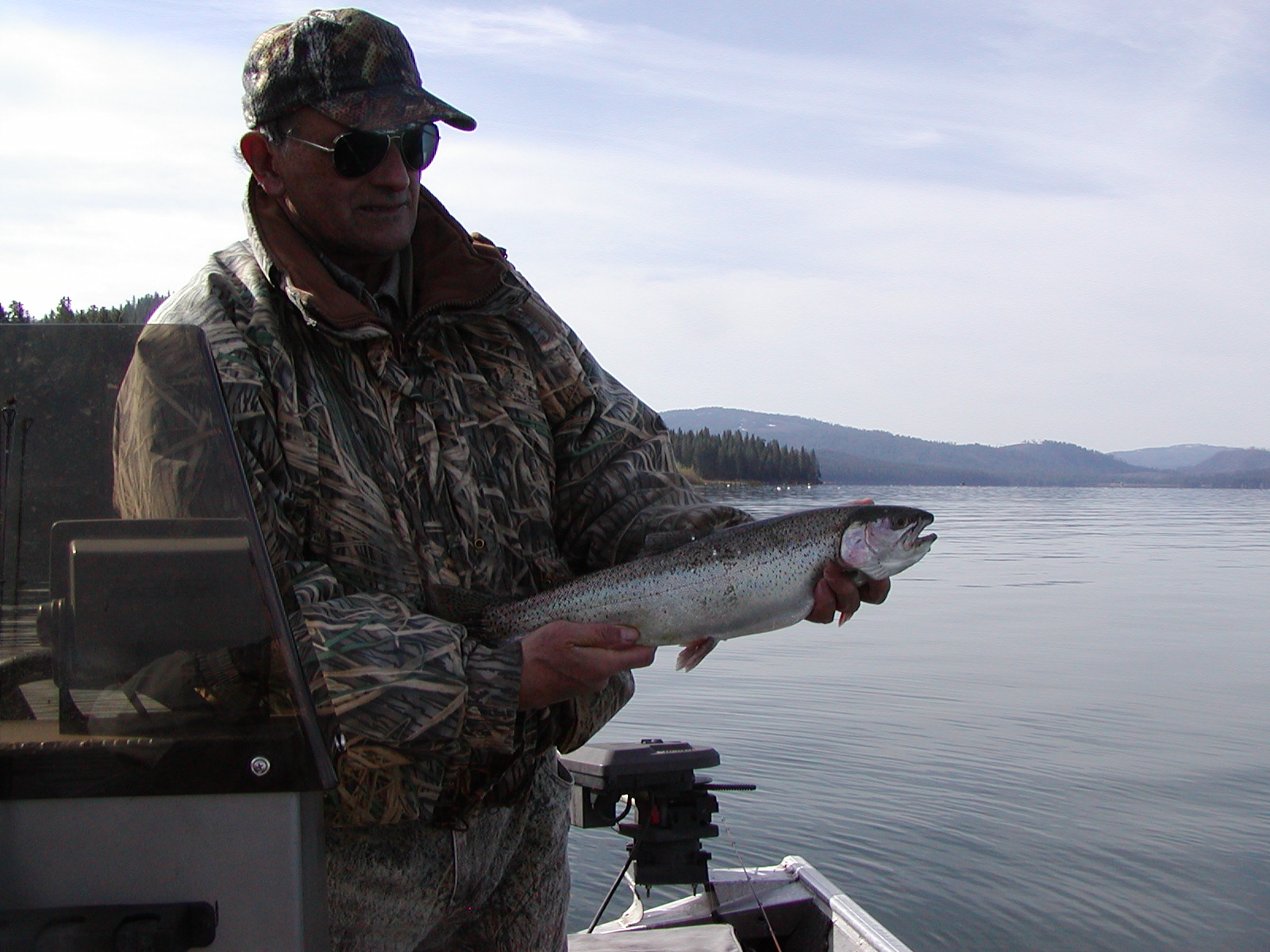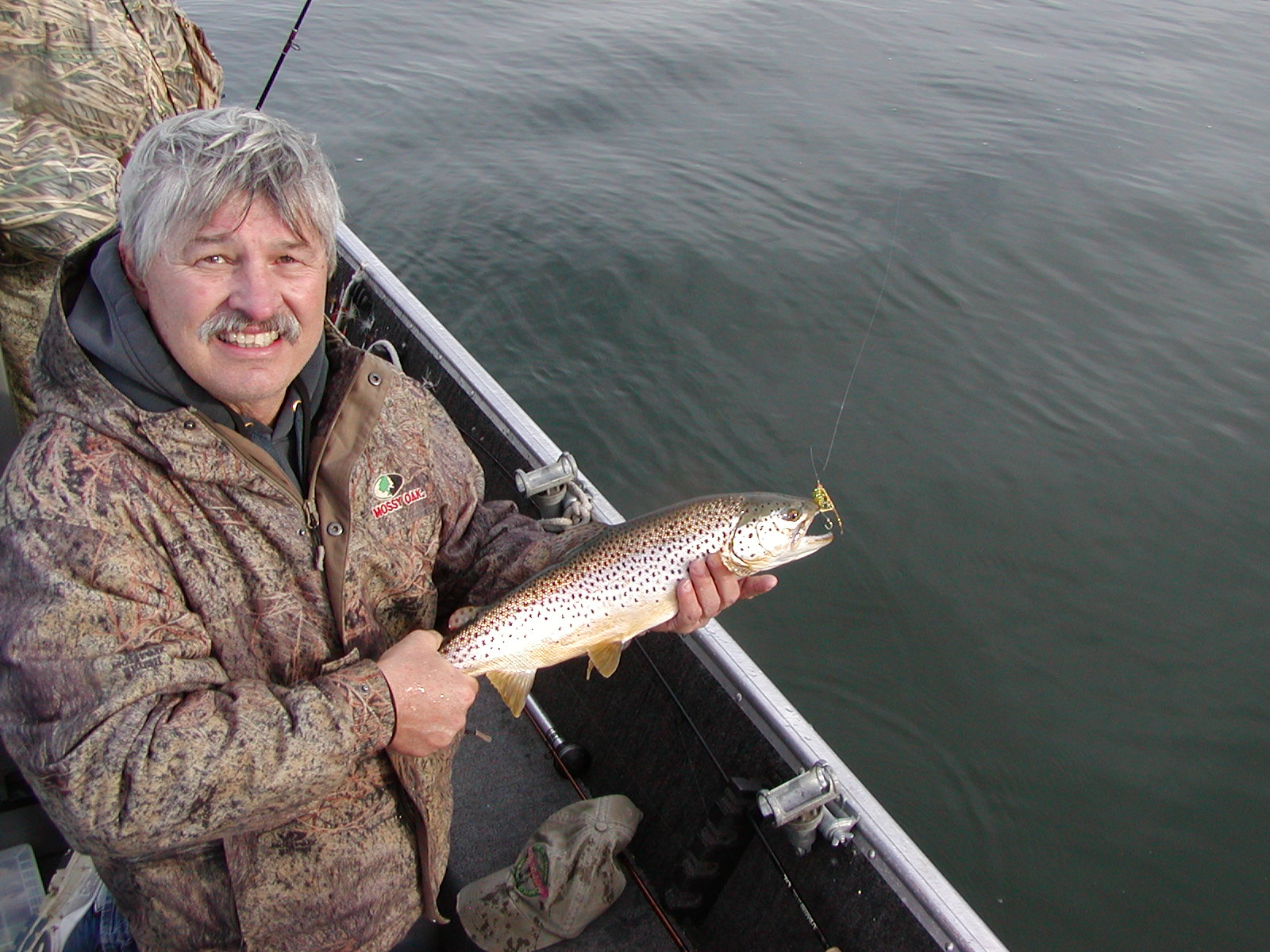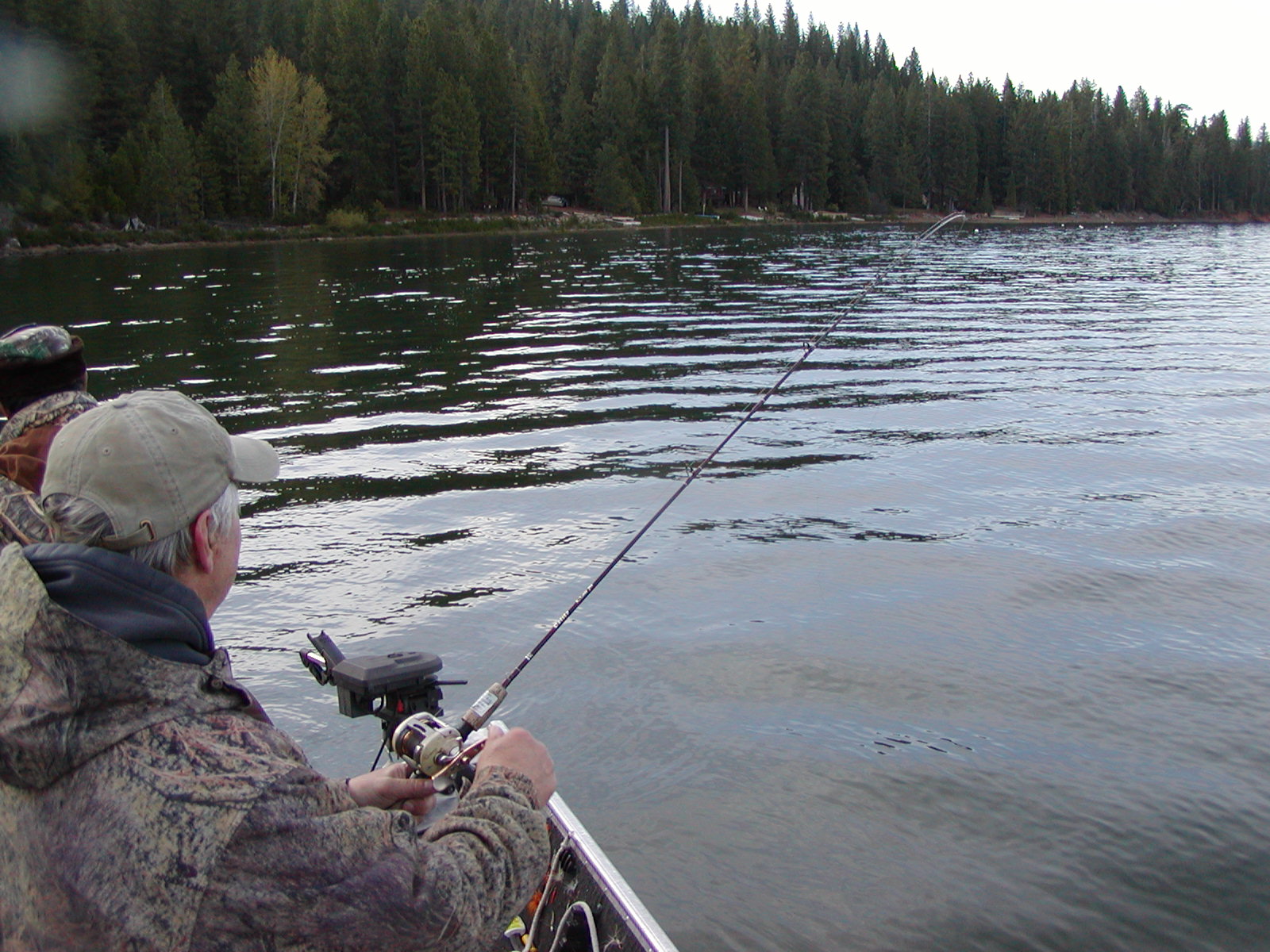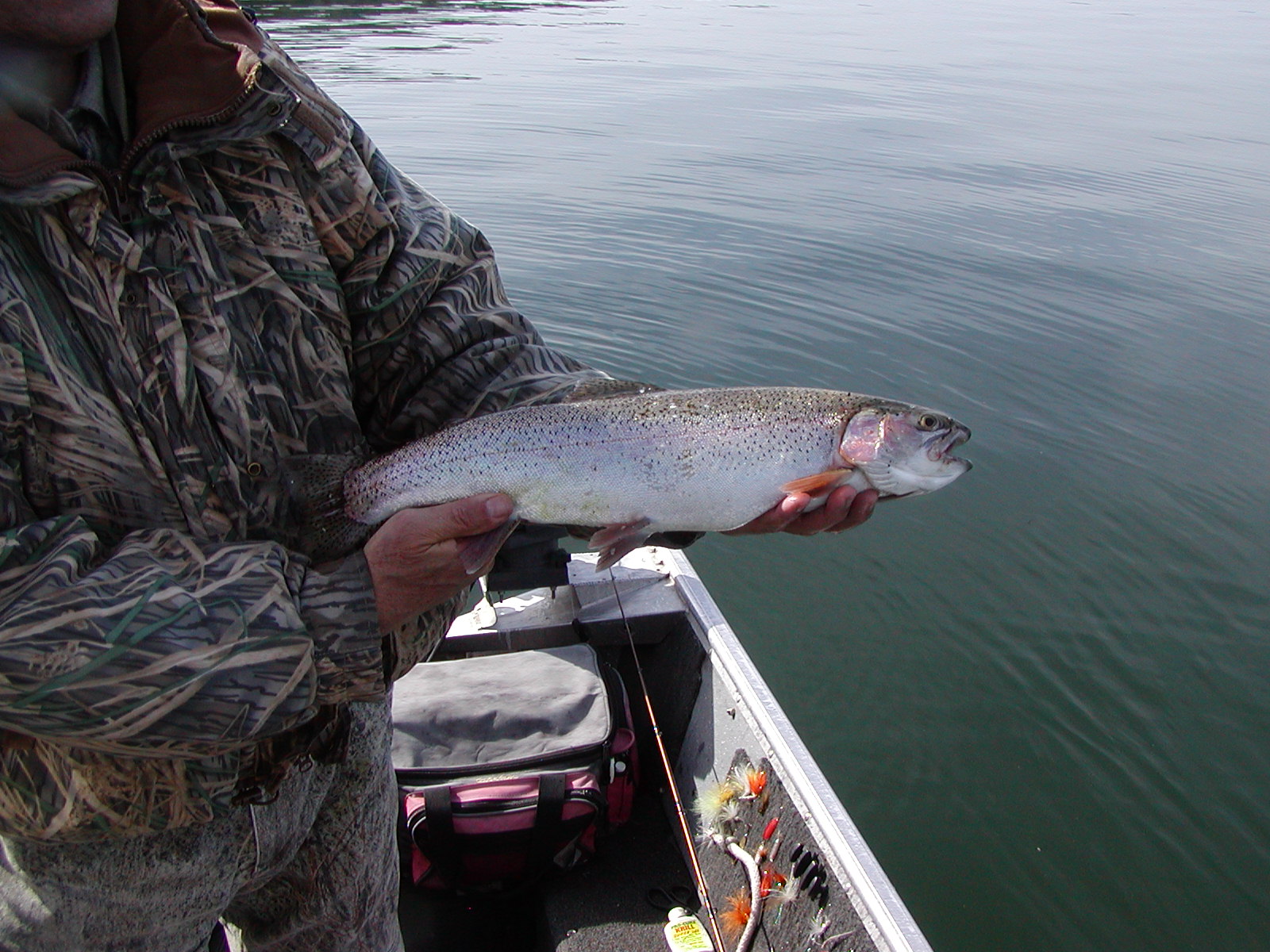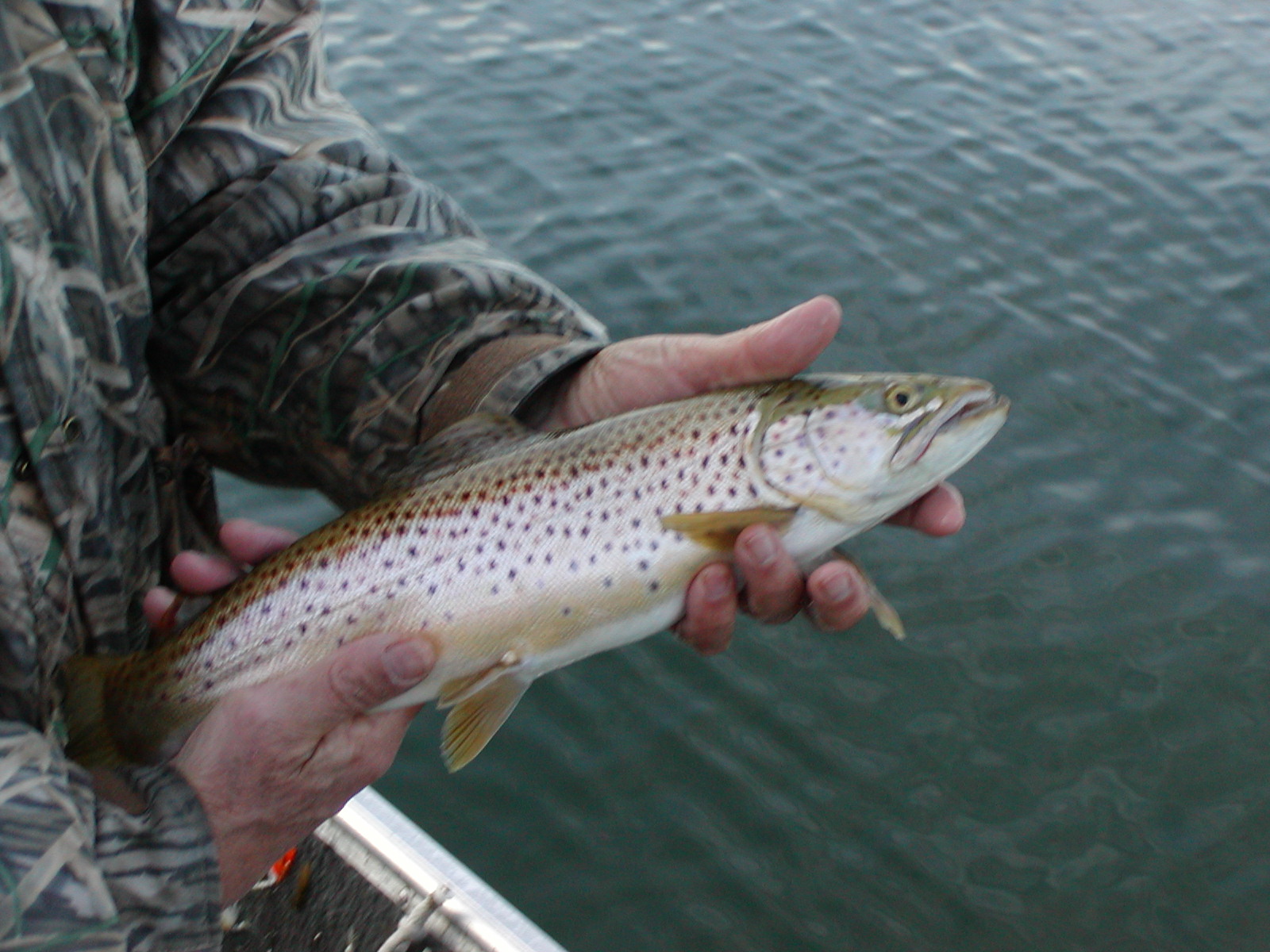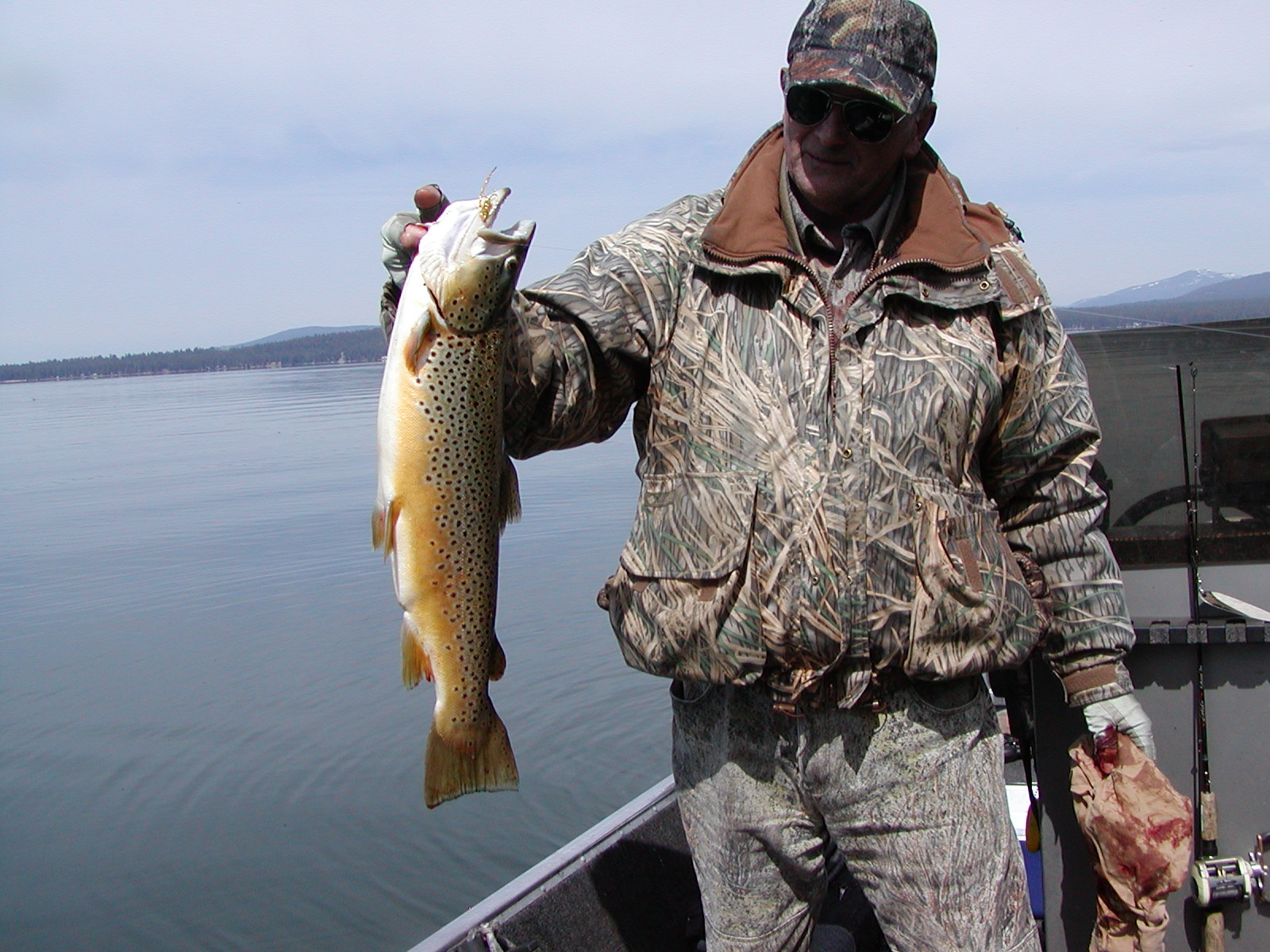SPRING TROLLING LAKE ALMANOR
With Veteran Fly Trolling Guide Mark Jiminez
This article first appeared in "The Union" Newspaper May 2016
Guide Mark Jiminez on Lake Almanor
Like many other human pursuits there is no end to the creativity that has been put into the sport of fishing. The sport varies from chasing huge fish in the deep water oceans to sneaking up on small trout in high mountain meadows. Each species and location is a new puzzle to be figured out and solving it is part of the allure.
My fishing interest for the last number of years has been trolling with flies. Originally my interest in the topic was sparked by Jay Fair, an angler and fly tier of some note in California. A couple of years ago, on a trip to Lake Almanor, I heard of a guide at the lake who specialized in trolling with flies, Mark Jimenez. Tom Maumoynier who owns the fly shop in Chester said he was a good angler and tied some innovative fly patterns for the lake. I decided to contact Mark and book a trip with him.
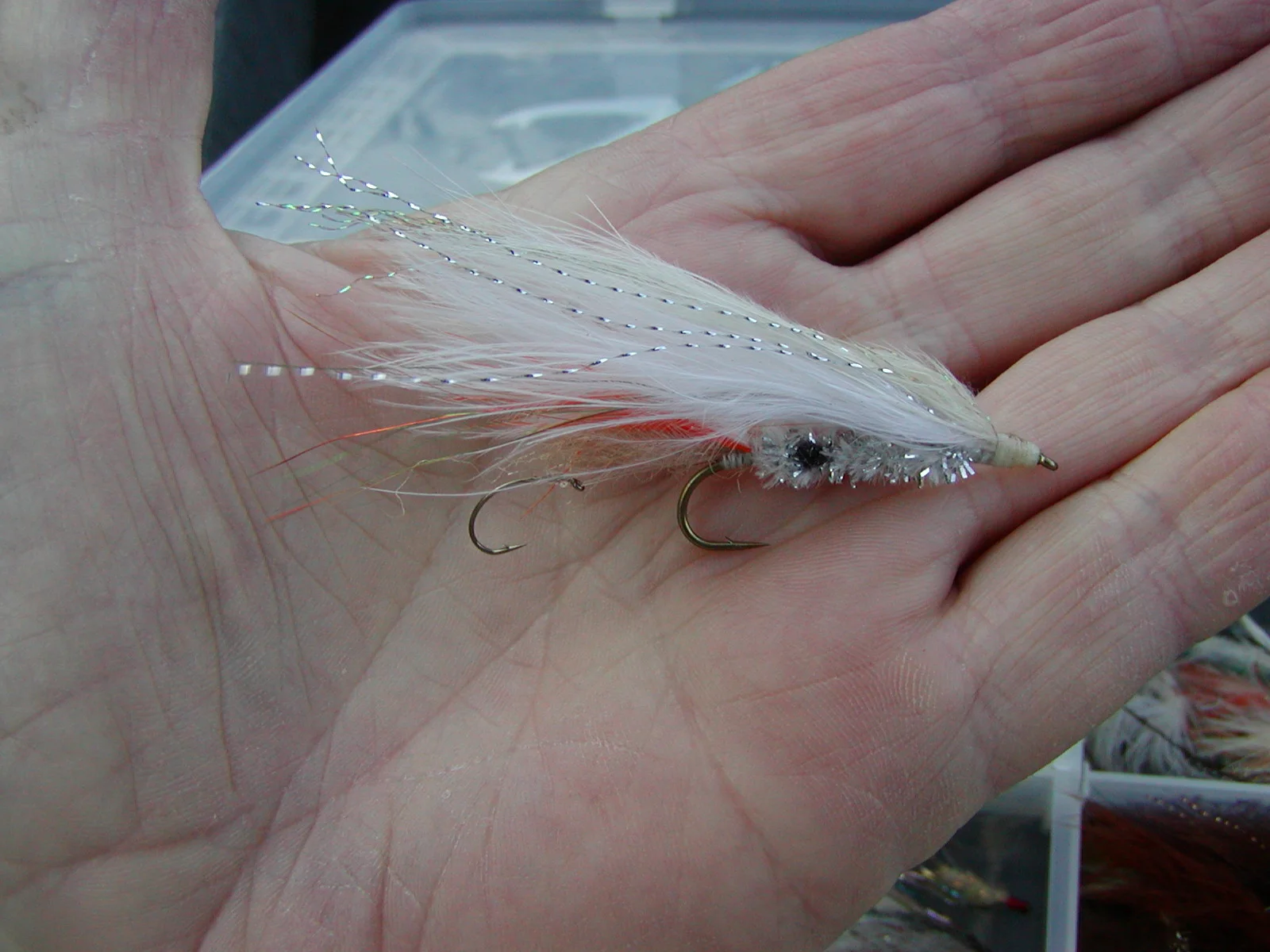
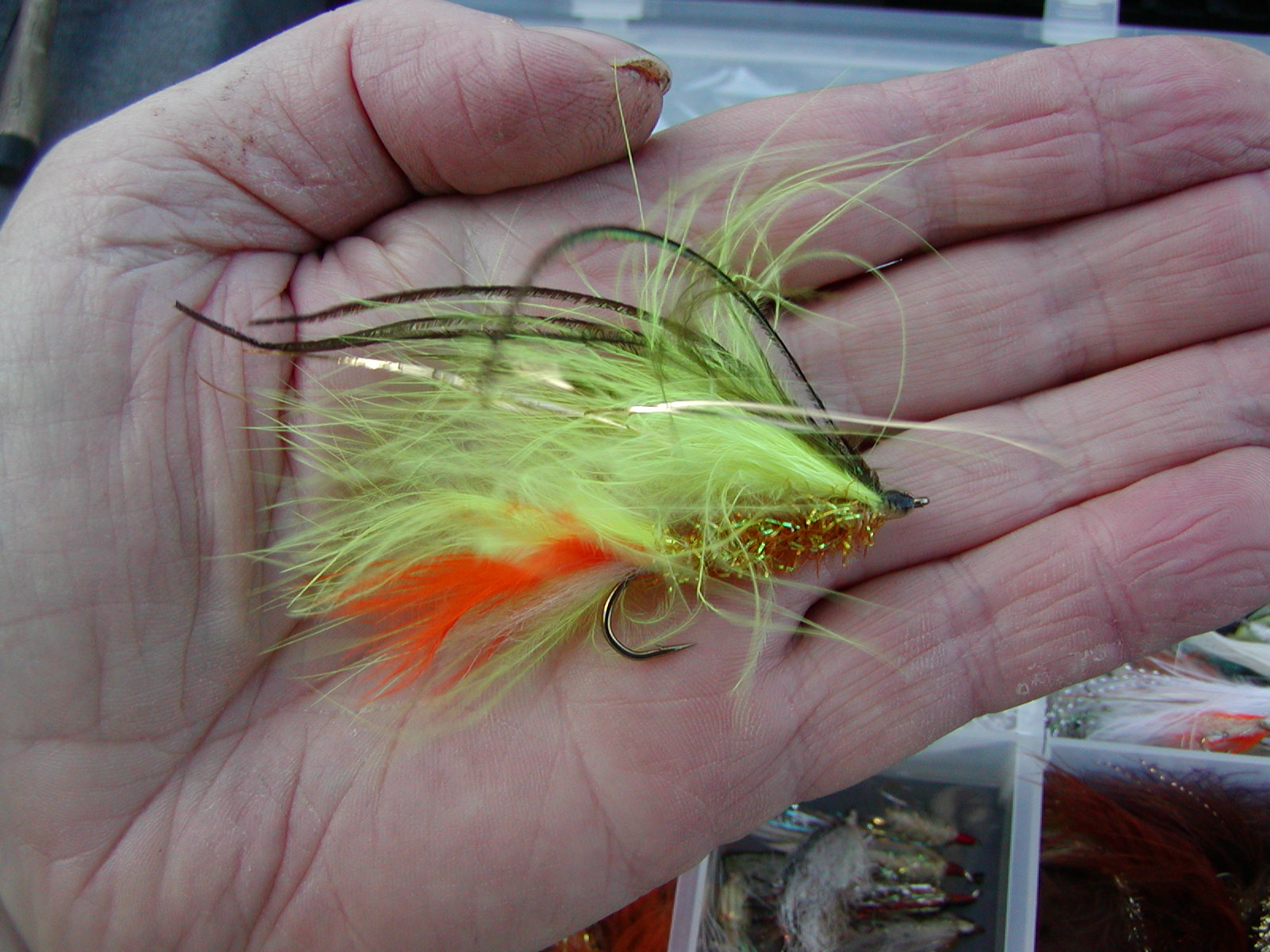
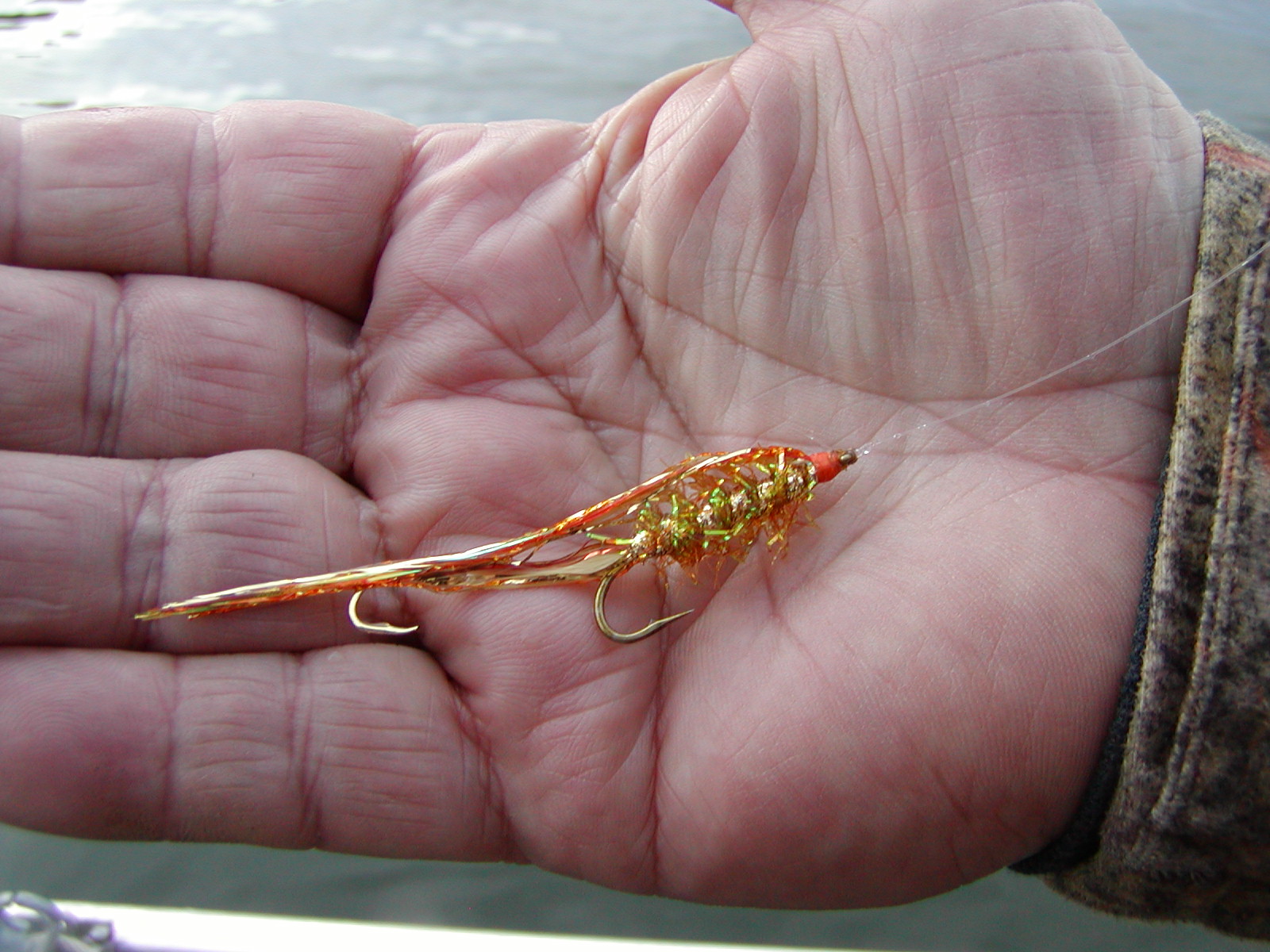

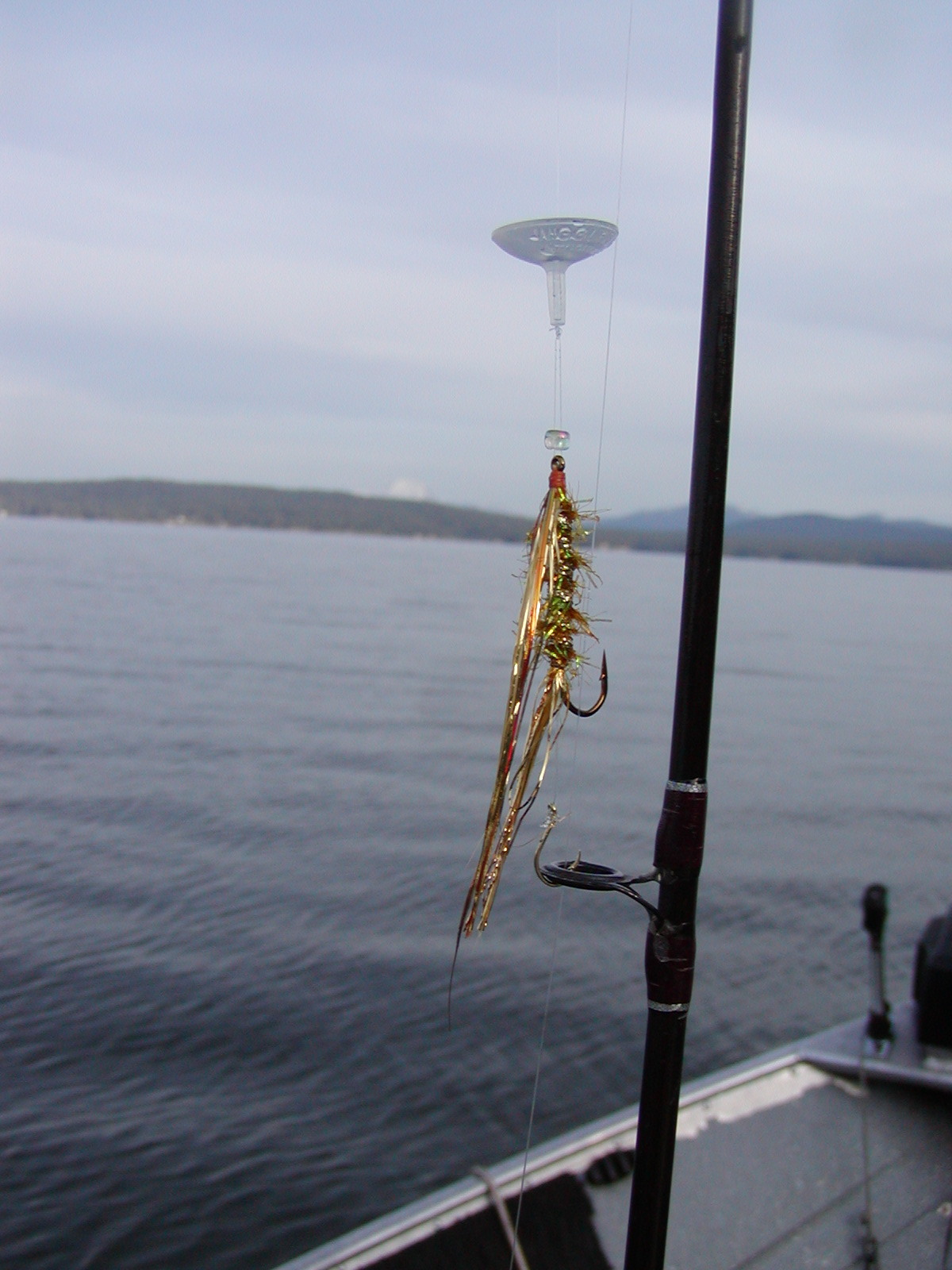

I was motivated to fish with Mark to get a different perspective from another angler who trolled with flies. I also wanted to see the flies that he tied. We were in contact by phone in the fall of 2015, but our schedules and the weather postponed a day on the water until after the new year. Winter fishing on Almanor can be good but Mark recommended waiting until late March or April for our trip.
Spring in the Sierra can be tough for fishing due to the winter storm fronts that continue to roll in off the Pacific. If you are a local, you can go with little notice. If you must drive three hours each way, you need to plan.
It is not the rain and snow as much as the wind that determine trolling on Lake Almanor. As a front comes in, it is accompanied by a southerly wind coming over the dam. The waves can build rapidly and a calm surface can get very rough in a matter of 15 minutes. After the front passes a north wind comes on with the rising barometer and the bite can be quite tough. We kept an eye on the weather and our opportunity came in late April.
Not having a fishing partner available for the trip I invited Tom to fish with Mark and me. We were at the boat ramp before sunrise and we were soon heading past the dam and up the east side of the lake. The weather man predicted a front arriving mid day and Mark knew some sheltered spots on the east shore where we could tuck in if the wind came up early.
There are seasons above the water and seasons below the surface at Almanor. In the coldest months the insect life in the lake is mostly dormant. At this time the trout concentrate their feeding on the pond smelt minnows, which are out over deep water. As the lake begins to warm in March the smelt move into the shallows to spawn and the trout follow. Once the equinox arrives the insects are coming out of hibernation and there are major midge hatches in the lake. The rainbow trout start feeding on them. The brown trout remain focused on the minnows. The other aspect of spring is the smallmouth bass get active and move toward shore for their spawn.
Trolling flies represent minnows. Mark's plan was to troll the rocky shallows on the east shore, prime minnow spawning habitat. There are quite a few buoys for tying up boats in the summer which kept us out over deeper water in a number of areas. Buoy anchor ropes can eat a lot of tackle.
We fished Mark's rods as well as his flies. I was there to learn how he fished. He had us using soft kokanee rods with lead core line to get the flies down. He had Tom using a flashy gold fly and he had me rigged with a white fly. The pond smelt in the lake are primarily white and I thought the advantage was mine. Too bad for Tom. The morning went on to show how wrong I can be. Tom had the first fish inside of 10 minutes and regularly hooked up there after. I did not hook a fish until I took off the "better" color and tied on a gold fly.
Mark had us "sweeping" the rods forward then letting them drift back toward the rear of the boat. This had the flies darting through the water followed by a pause. The fish often hit the fly as the pause ended and the sweep began. This also helped set the hook.
In our conversations Mark, predicted that we would do well on smallmouth bass and brown trout. It was his experience that the rainbows preferred to eat midges when there was a hatch. In the calm coves, there were areas with midges all over the surface of the water. During our trip we caught more than 20 fish and only two of them were rainbows. The rest were a mixed bag of smallmouth bass and brown trout. Our largest fish of the day was a 5.5 pound brown.
Around midday Mark pointed out the clouds to the southwest and just the hint of a breeze on the water coming towards us from the dam. Mark had us bring in the gear to head back toward the launch ramp. He got the big motor started and the boat up on plane headed south. It was not 10 minutes later that the boat was pounding into foot high waves and white caps. The wind can come up quickly on mountain lakes. There was some calm water in the shelter of the dam where we fished a bit more and picked up a couple more bass, then we headed in.
For me it was a great trip. Yes I did get to reel in some fish, but more importantly I learned a lot about how to fish Lake Almanor and I was shown another perspective on how to troll with flies. After we got the boat on the trailer I showed Mark my fly patterns and we had a fly swap. I now have a collection of his flies that I can use for tying inspiration and as a memento of one of my more memorable Sierra trips.
Denis Peirce writes a fishing column for The Union's Outdoors section and is host of "The KNCO Fishing & Outdoor Report," which airs 6-7 p.m. Fridays and 5-6 a.m. Saturdays on 830-AM radio. Contact him via his website at http://www.trollingflies.com.

